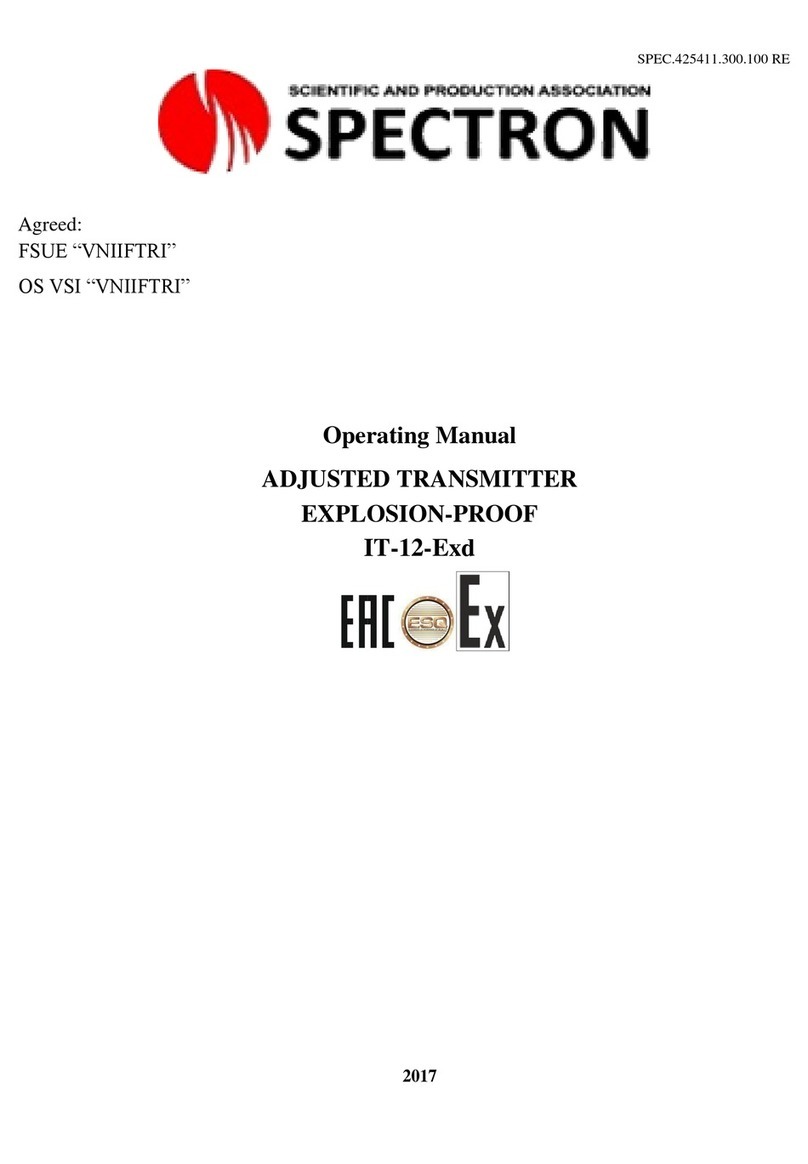7
6. REPAIR AND RETURN OF THE DEVICE
The transmitter is not intended to be repaired by the user on site. If any problem
occurs, please follow section 4 - Troubleshooting. If you identify any defects or
failures that occurred through manufacturer’s fault, the user unilaterally creates a
failure certificate with defect description. The transmitter along with the product
passport and certificate shall be returned to the manufacturer.
Transmitter’s transportation packaging is described in section 7 - Transportation
and storage. If the transmitter is returned to the manufacturer, it should be sent to:
2D Lenin St., Beryozovsky, Sverdlovsk Oblast, 623700, Russia, tel.:
(343)379-07-95.
7. MANUFACTURER’S WARRANTY
The transmitter’s average service life is at least 10 years (this does not apply to the
batteries included in the transmitter).
The transmitter’s warranty life is 12 months from the date of sale.
Get an additional free 24-month warranty through WARRANTY EXTENSION
service at http://spectron-ops.ru/.
Warranty repairs in compliance with GOST R IEC 60079-19 and transmitter
replacement shall be performed by the manufacturer only if the user follows all
transportation, storage and operation requirements.
The manufacturer shall not accept any claims after the warranty period expires, if
the product passport for the transmitter is not provided or the Operating Manual is
not followed.
8. TRANSPORTATION AND STORAGE
For transportation the transmitter should be packed in the factory package or a
dimensions-suitable box; it must be protected with bubble wrap, polyethylene
foam or another shock absorbing material. If several items are packed in one box,
spacers must be placed between them.
It is allowed to transport the transmitter to any distance by any type of transport.
Protection of the transport package from precipitation shall be provided for the
period of transportation.


























